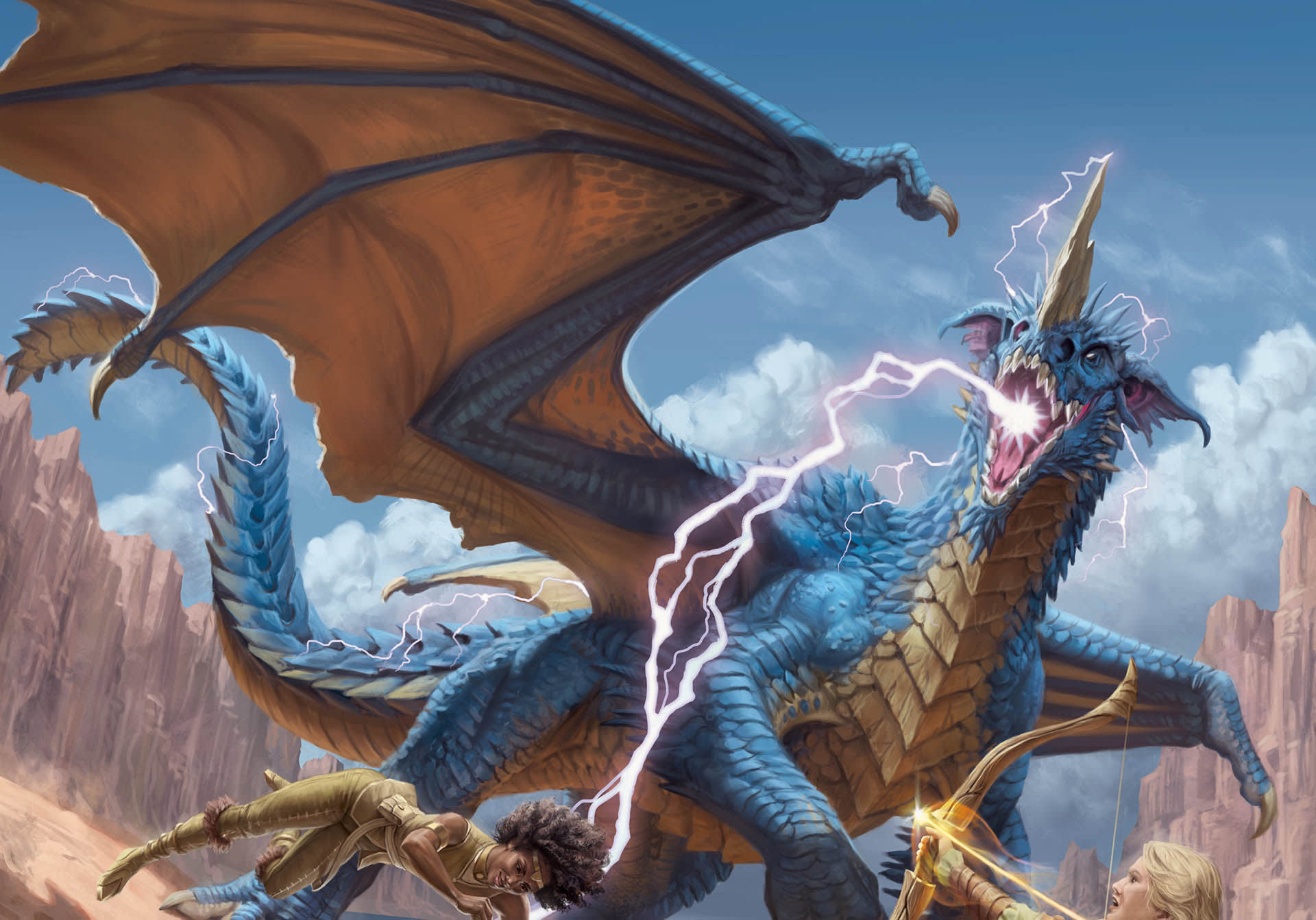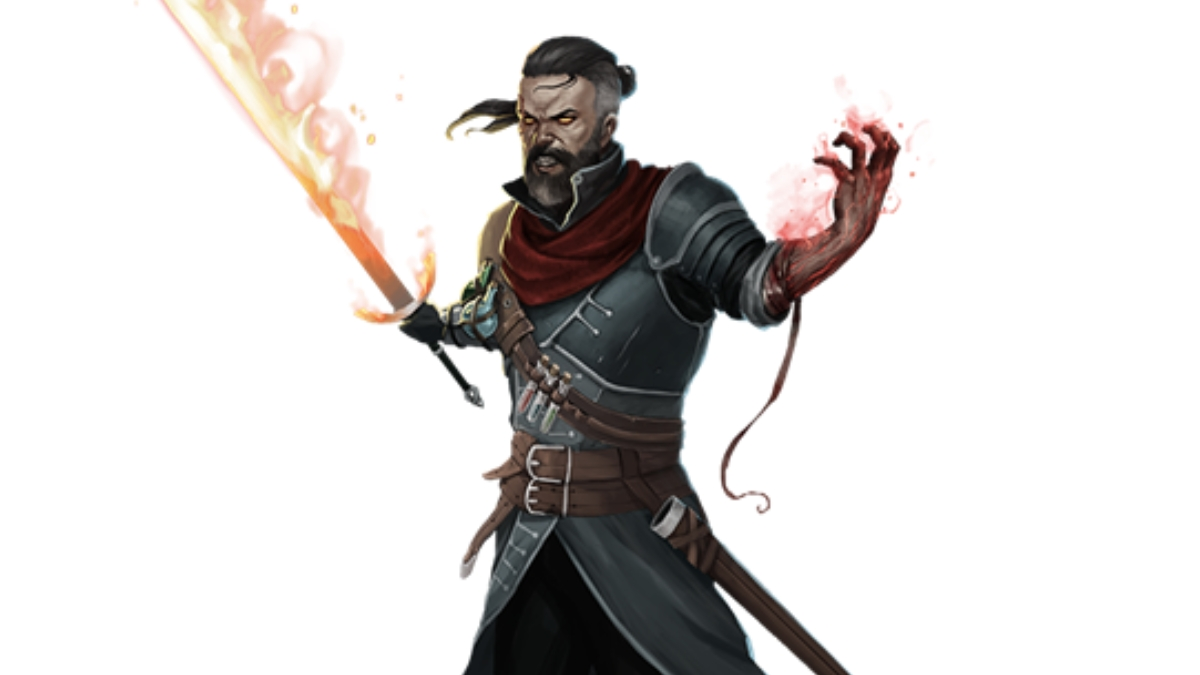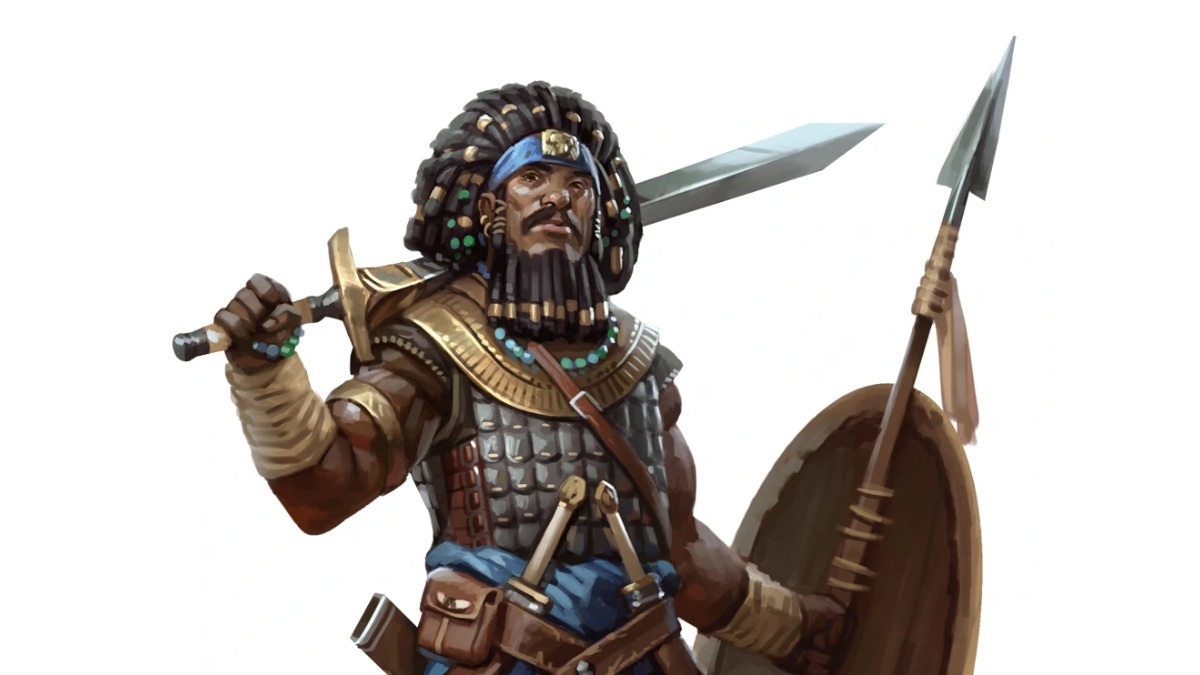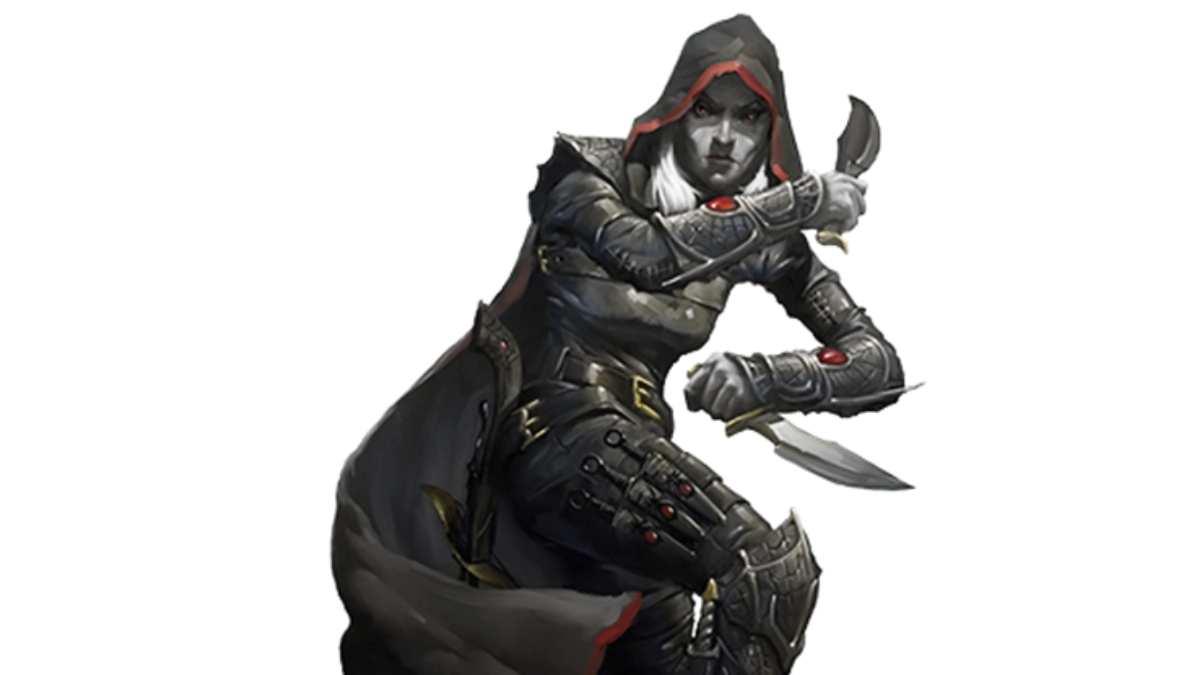A Guide to the Major ‘Dungeons & Dragons’ Classes

Dungeons & Dragons characters are often defined by three key traits: their species, their class, and their alignment. While it’s possible to play a wealth of different species from regular humans to anthropomorphic birds, cats, or lizards, the number of Dungeons & Dragons classes is much smaller. In addition to the 13 official selections, one was also created for Critical Role that can be incorporated into campaigns.
But what is a Dungeons & Dragons class, and how do you choose one? Here’s a breakdown of each class’s particular abilities and specialties to inform your next character.
Artificer

The newest addition to the official list of classes in Dungeons & Dragons 5e is the Artificer, which was introduced in 2020’s Tasha’s Cauldron of Everything. Artificers invent magical objects and/or infuse everyday objects with magic, harnessing power through their various tools.
Starting at third level, players can choose one of four Artificer Specialist options to pursue: Alchemist, Armorer, Artillerist, or Battle Smith. Alchemists both give life and take it away, as they combine “reagents” to create “mystical effects.” Armorers modify and enhance armor, then bond with it until it becomes more like a second skin that harnesses their magic to attack foes and up their defense. Artillerists use magic on the battlefield to throw weapons, explosions, and even bursts of energy that deal massive damage. Battle Smiths are healers who focus on both protecting others and fixing what’s been broken.
D&D Artificers can begin infusing items with magic from first level and gain the ability to work with more, better, and bigger items as they progress. They’ve got slightly higher Hit Points and defense than other magic-using classes, and their reliance on tools makes them even more unique.
Barbarian
Barbarians are defined by rage, which not only makes them fearsome fighters but gives them incredible strength, resilience, and reflexes. For this D&D class, rage isn’t just an emotion, but a power driven by each individual Barbarian’s relationship with the world. They may draw on the power of their ancestors, or their connection with animals, or their intense desire for violence, or even their susceptibility to wild magic.
Whatever path a Barbarian chooses, they’re excellent at detecting nearby dangers and protecting themselves even without armor. They are also ferocious in combat: Barbarians get extra attacks, the special Reckless Attack ability (which gives them an advantage in melee attacks in exchange for their foes getting an advantage in attacks against them), and an advantage in certain roles. Barbarians are tanks, and their defensive and offensive abilities make them a boon to any party.
Bard
Bards weave magic through their music, which allows them to both inspire their party and humiliate their foes in battle. In Dungeons & Dragons, Inspiration gives players an advantage on certain rolls, meaning they can roll the dice two times and take the higher number. This is especially useful in dungeon crawls and combat when the player’s character may be in danger, but it’s also helpful for in-game social situations and information-gathering. Dungeon Masters can award Inspiration, but so can Bards—and while it may seem annoying to have your own personal Jaskier following you around with a lute or a ukulele, it can pay off in a big way.
At third level, Bards choose one of seven Colleges to advance and specialize their skills. The College of Creation teaches the powerful “Song of Creation,” which is responsible for all things and imbues its learners with the ability to create and animate objects to aid their quest. The College of Eloquence teaches its Bards how to blend logic with theatrics to become incredibly persuasive. The College of Valor sings songs of the greatest heroes, inspiring new ones by recalling their deeds.
Some Colleges hone Bards like sharp blades. The College of Glamour trains Bards in the ways of the Feywild, which makes them both revered and terrifying. The College of Lore teaches Bards a bit of everything to give them advantage in dozens of situations where knowledge is required for advancement. The College of Sword grants incredible prowess with weapons, as well as magic and song. And the College of Whispers teaches Bards how to act as wolves among sheep, since most see Bards as unthreatening—which gives them the ability to blend in and then use what they learn to strike hard, fast, and with surprising power.
Blood Hunter

Critical Role Dungeon Master Matthew Mercer created the Blood Hunter, which was published as a new class for Dungeons & Dragons 5e in the 2020 sourcebook Explorer’s Guide to Wildemount. Technically, the Blood Hunter is not an official D&D class, so including it as a one-shot or campaign option is up to the Dungeon Master’s discretion.
Blood Hunters are warriors who will do anything to uproot and destroy all evil. When we say “anything,” we mean it: This class uses blood magic, or “hemocraft,” to curse foes or summon the elements to bulk up their hits. Blood Hunters gain this ability through completing the Hunter’s Bane ritual, which can change their physical appearance as well as their abilities. There’s plenty of suspicion around hemocraft, so Blood Hunters often stay on the outskirts of society and do their work in isolation.
At level two, Blood Hunters choose a fighting style and learn the Crimson Rite, which infuses their weapons with elemental energy in combat. They can learn additional Crimson Rites at level seven and level 14. There are six in total: Rite of the Flame, Rite of the Frozen, Rite of the Storm, Rite of the Dead, Rite of the Oracle, and Rite of the Roar. Blood Hunters are not afraid of sacrificing themselves for the greater good, which makes them especially interesting to play.
Cleric
Clerics are highly devout worshipers of their chosen gods who become conduits of divine magic and use its power to heal and inspire their allies, or intimidate and curse their foes. They can also hone their magic for powerful melee attacks in battle or call down the elements to smite their enemies.
When building a Cleric, players will choose a deity and then a related domain (e.g., Knowledge, Life, Light, Tempest, Trickery, or War). This choice dictates what domain spells and features the player’s Cleric can use, including how their Channel Divinity ability will work. Channel Divinity unlocks at level two, and gives Clerics the ability to directly channel divine energy from their deity to fuel their magic. Starting at second level, all Clerics can use their holy symbol to scatter any Undead within 30 feet of them and do one other spell based on their chosen domain.
Although Clerics are often seen as “just healers,” they can also do solid damage in combat and their religiosity can have a unique impact on a Dungeons & Dragons campaign depending on how heavily the gods are involved in the story.
Druid
Druids are magic users who revere nature above everything, and have unique relationships with the elements and animals of the world. They might worship a nature deity or derive their power from nature itself, but in either case, they can channel the power of this bond to vaporize foes and aid their party members. They also speak Druidic, a secret language they use to leave hidden messages for others of their kind.
Druids choose their magical specialties by choosing a Circle. Druids in the Circle of Dreams align with good fey and seek to fill the world with wonder; those in the Circle of Spores use fungi to create beautiful but bizarre life, and they see nothing wrong with undeath; those in the Circle of Stars call on celestial power for their spell work; those in the Circle of the Land are mystics and sages who use oral tradition to safeguard their ancient knowledge; those in the Circle of the Moon seek to fiercely guard the wildest parts of the Realms; those in the Circle of the Shepherd call on beasts and fey for aid, in return protecting defenseless fey and animals from encroaching civilization; and those in the Circle of Wildfire use destruction as a means of new creation.
Druids are wildly powerful and draw on a number of unique abilities, including Wild Shape, which allows them to transform into certain beasts starting at second level. They’re incredibly fun and add a lot of flavor to campaigns.
Fighter

Fighters learn the basics of every fighting style, making them uniquely equipped to take up any combat role in Dungeons & Dragons—from knights to mercenaries and foot soldiers. Depending on their chosen specialty, they may or may not use magic, but with or without it they are formidable opponents and can cut an enemy down to size in seconds. They can even use psychic abilities.
Similar to Barbarians, Fighters are tanks who can deal a wealth of damage in quick succession and stay standing even after other members of the party have fallen. They have proficiency with every type of armor, as well as simple and martial weapons, and they have the unique Second Wind ability, which draws on their stamina to regain their hit points during combat.
Monk
In Dungeons & Dragons, Monks are martial arts masters who harness the magical energy known as ki to push their bodies beyond their own physical capabilities and channel speed and strength in battle. They learn how to harness ki at secluded monasteries, often entering into these sacred spaces as children and training their whole lives.
At third level, Monks commit to one of 10 Monastic Traditions, which—like other class specialties in D&D 5e—inform their combat abilities and powers.
Paladin
Paladins are similar to Clerics in that they call upon their chosen deities to perform certain actions. However, Paladins aren’t healers; they’re soldiers who make sacred oaths and eradicate evil through these entrenched bonds. They’re tank-like with their armor and weapons proficiencies, and can both detect evil and heal wounds to bolster themselves or their party members.
There are nine different oaths for Paladins to take, each of which sets them on a different path of righteousness. However, there is also a unique subclass known as the Oathbreaker, which describes any Paladin who’s broken their sacred oath to serve darkness and evil instead. This effectively makes them a villain in a campaign of good heroes, though it can offer interesting storytelling opportunities regardless of how the rest of the party is aligned.
Ranger
Remember Aragorn in The Lord of the Rings? He isn’t exactly like a Dungeons & Dragons Ranger, but he’s fairly close. For that matter, so are the Watchers on the Wall in Game of Thrones. In D&D, Rangers are deadly hunters who combat threats on the edge of civilization in the hopes of preventing those threats from ever reaching more populated areas.
Rangers can choose from seven archetypes known as Beast Master, Fey Wanderer, Gloom Stalker, Horizon Walker, Hunter, Monster Slayer, and Swarmkeeper, each of which calls upon their unique relationship with the world. Rangers typically work alone, and use a combination of weapons combat and spellcasting to defeat their foes.
Rogue

Rogues rely on stealth to take down their enemies, lurking in the shadows and launching surprise attacks that can often be deadly. They’re also incredibly clever and use their problem-solving skills to get out of seemingly impossible situations on a regular basis. This makes them especially useful to their adventuring party, especially if they need to defeat a foe without drawing attention to themselves through open combat.
Rogues use the secretive language Thieves’ Cant to communicate with their network of allies, and they’re fast and slippery in every situation involving combat. Special abilities allow Rogues to dodge blows at the last second and lessen their potential injuries if they do get hit. And, depending on their archetype—Arcane Trickster, Assassin, Inquisitive, Mastermind, Phantom, Scout, Soulknife, Swashbuckler, or Thief—they may call upon magic or other supernatural forces to aid them in their work.
Sorcerer
Sorcerers have magic in their blood, usually inherited from their ancestors. However, there are seven possible origins for this innate magic that fall into two basic categories: a draconic bloodline or wild magic. Starting at third level, Sorcerers can alter spells to suit their needs, and they can use the unique ability Magical Guidance to try and succeed on failed rolls—which could make or break them.
Warlock
Warlocks are magic users who gain their spellcasting ability through making deals with extraplanar beings, which they refer to as their patrons. Warlocks could make deals with Archfey, Celestials, Elementals, or even Fiends. Depending on the magic granted to them through these bonds, Warlocks might create powerful magical weapons, learn to breathe underwater, or transport foes to Hell itself.
Wizard
Wizards learn magic through intensive study of the Arcane, which allows them to continue learning magic as they gain more knowledge. They are powerful enough to summon monsters or open portals, and many of them believe that if they can uncover secrets long buried with their counterparts in ancient civilizations, then they might unlock magic even more bombastic than what’s available in the present age.
Wizards specialize in one of eight schools of magic—Abjuration, Conjuration, Divination, Enchantment, Evocation, Illusion, Necromancy, or Transmutation—which they choose at second level and which will inform the spells they learn and use as they continue to level up. They can also learn Arcane Traditions that incorporate weapons, time manipulation, and even War Magic.
(featured image: Wizards of the Coast)
Want more stories like this? Become a subscriber and support the site!
—The Mary Sue has a strict comment policy that forbids, but is not limited to, personal insults toward anyone, hate speech, and trolling.—
Have a tip we should know? [email protected]